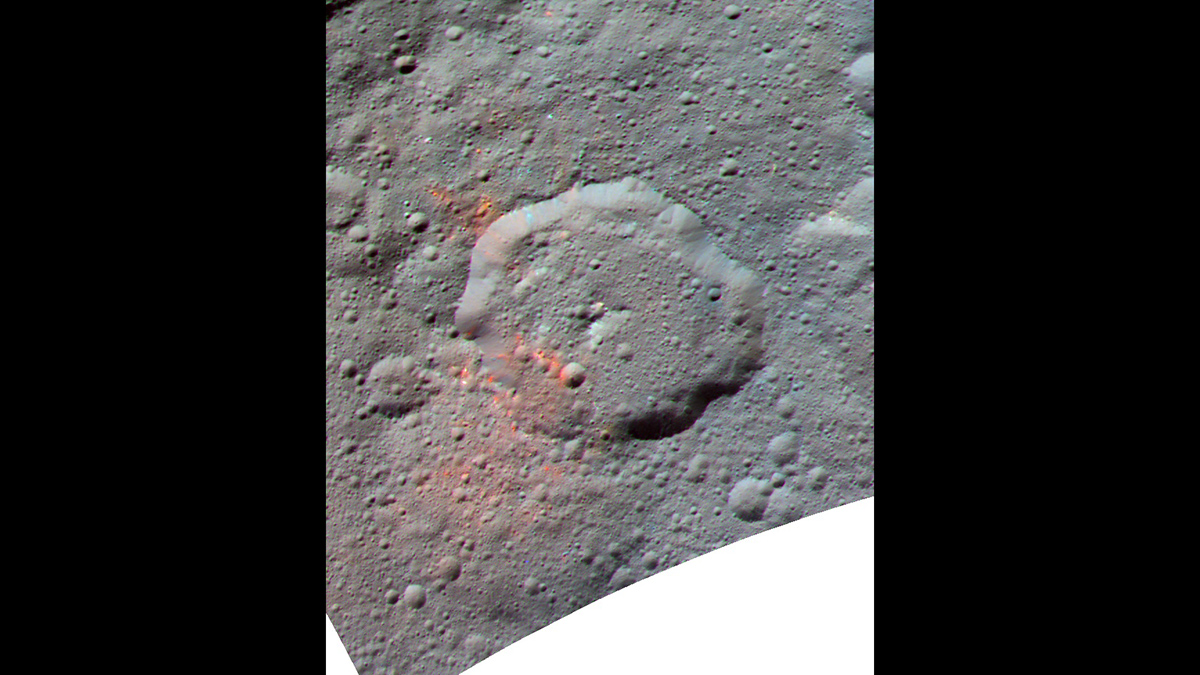Source: AGU Advances
The dwarf planet Ceres is the largest object in our solar system’s asteroid belt, and it may have remnants of a subsurface ocean.
In 2017, researchers reported that NASA’s Dawn spacecraft had discovered complex organic compounds on Ceres, including in the 50-kilometer-wide Ernutet crater. They suggested the compounds, which consist of carbon atoms arranged in long chains, were most likely produced by chemical processes on Ceres. However, as more Dawn data were analyzed, a lively debate grew over whether these organics had indeed formed on the dwarf planet or were delivered by organic-rich asteroids that crashed into its surface.
Now, Sarkar et al. present a new analysis that supports an external, asteroid origin for Ceres’s complex organic compounds.
The researchers scanned Ceres’s surface in search of any organic compound hot spots that earlier studies may have missed. First, they applied a machine learning approach known as a deep neural network to images captured by Dawn’s Framing Camera, probing for reddish, visible-wavelength signatures of potential organic-rich sites. Then, they further analyzed those sites using data from Dawn’s Visual and Infrared Spectrometer, specifically looking for infrared light at 3.4 micrometers—a telltale sign of the chain-like compounds they sought.
Though the deep neural network revealed several reddish, previously undetected sites of interest across Ceres’s surface, only two of the new sites had the 3.4-micrometer signature of complex organic compounds, which are likely associated with the main deposit at Ernutet crater. Taking a closer look at the previously known sites, the researchers found that the organic compounds appear to be limited to the upper layer of Ceres’s surface. In addition, they did not find geologic features, such as fracture systems or volcanic structures, that might indicate the materials came from Ceres’s interior.
Instead, the new data suggest that the organic compounds were more likely deposited by organic-rich asteroids that crashed into Ceres, traveling slowly enough that at least some of the organics remained intact after impact.
Organic compounds are thought to be the “building blocks” of life. Although these findings don’t suggest that Ceres has ever harbored life, they deepen understanding of the history and distribution of organic compounds in the solar system.
The researchers note, however, that the debate may not yet be resolved; it is still possible that organic compounds are indeed produced on Ceres but escape current detection capabilities. (AGU Advances, https://doi.org/10.1029/2024AV001362, 2025)
—Sarah Stanley, Science Writer

